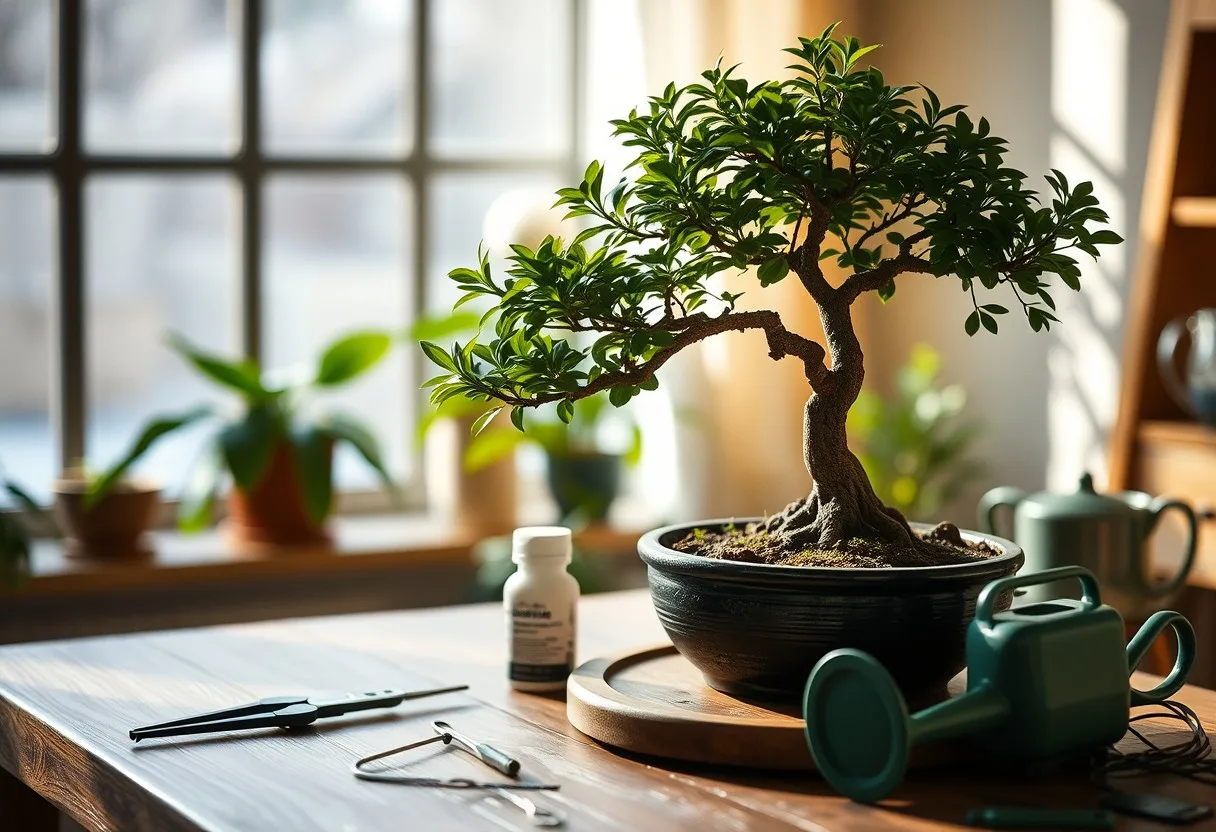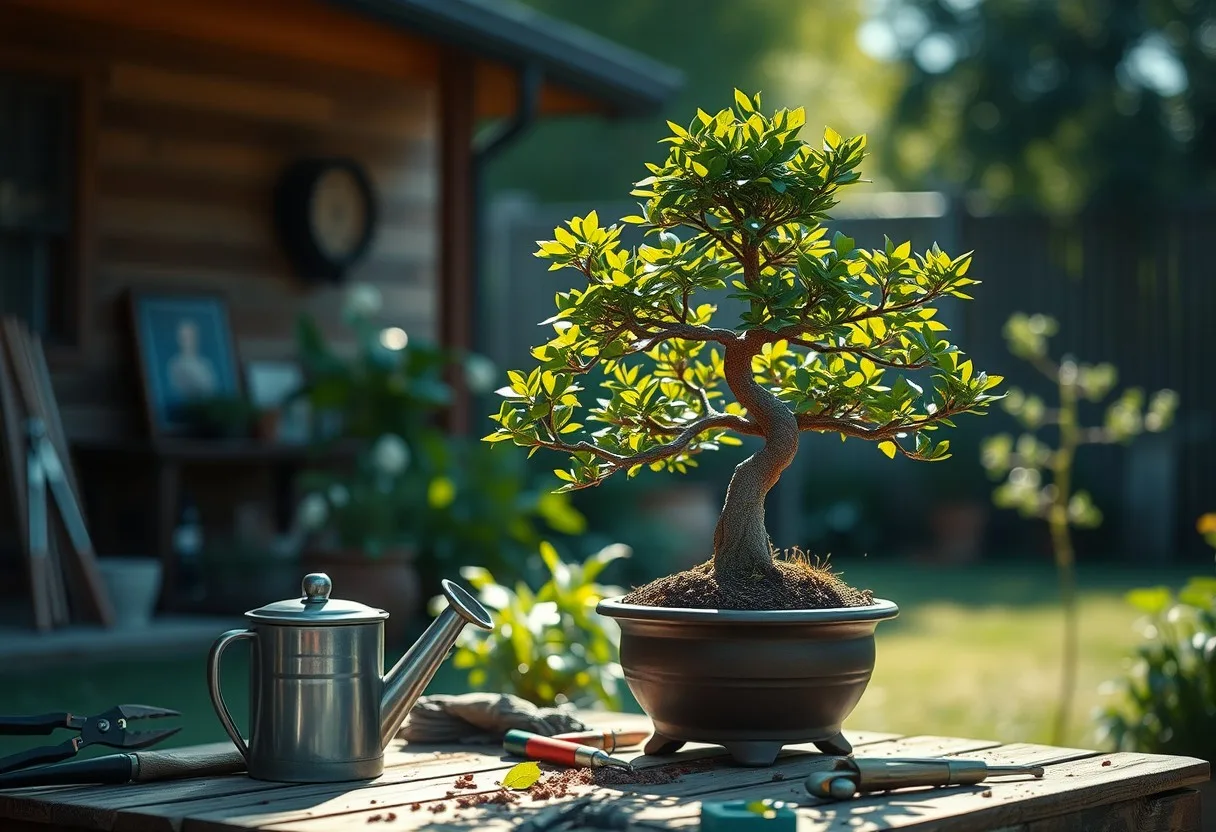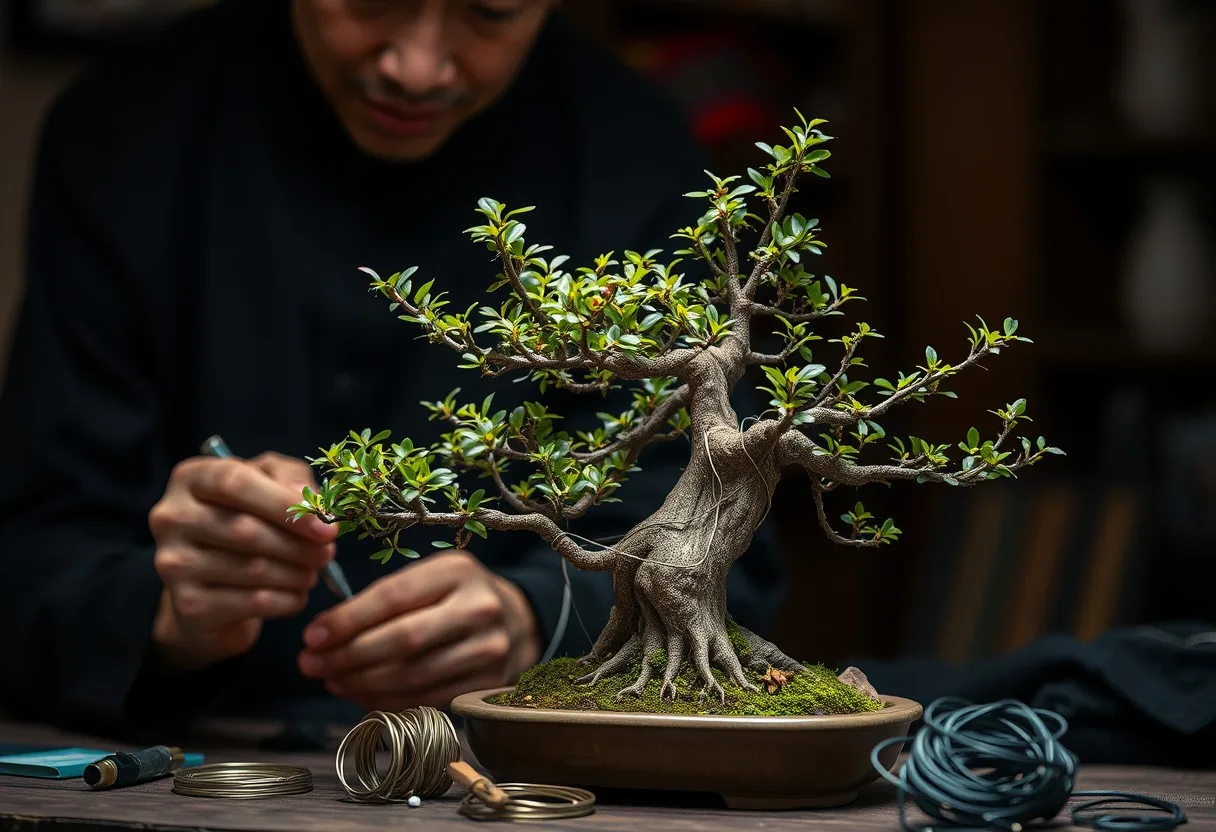It’s necessary to provide your bonsai trees with the right care throughout the seasons to ensure their health and vitality. As living works of art, these miniature trees require attention to watering, soil health, and pest control specific to each season. By following this comprehensive guide, you’ll learn how to adapt your maintenance routine to the changing climatic conditions, allowing your bonsai to thrive and showcase its beauty year-round. With a bit of effort and understanding, you can create an environment where your bonsai truly flourishes.

Spring Care
For your bonsai tree, spring is a time of rejuvenation as it awakens from its winter dormancy. To set a strong foundation for growth, you’ll need to pay close attention to watering, fertilization, and pruning. By adjusting care routines to meet its increasing demands, you can ensure your bonsai thrives throughout the warmer months.
Pruning Techniques
With spring being the ideal season for pruning, this necessary practice helps you shape your bonsai and stimulate new growth. Focus on removing any dead or weak branches and thin out dense foliage to promote better air circulation. Use sharp, clean tools for precise cuts and make your adjustments early in the season to limit stress on the tree (timing can significantly influence the effectiveness of your pruning efforts).
Fertilization Schedule
Care for your bonsai’s nutritional needs by using a balanced fertilizer in spring to stimulate robust growth. Ideally, you should apply fertilizer every four to six weeks, ensuring that you dilute it as instructed to prevent root burn. Liquid fertilizers can offer rapid absorption, while slow-release options provide steady nutrition over time (selecting the right type of fertilizer suited to your species is key).
Spring is a pivotal time for fertilization, as your bonsai’s growth accelerates and demands more nutrients. Using a high-quality balanced fertilizer not only supports growth but also enhances your tree’s vitality. During this period, check the soil frequently to adjust your fertilization strategy based on signs of growth and health (a tailored approach will yield the best results).
Summer Care
Any bonsai tree owner knows that summer poses unique challenges due to increased heat and sunlight. During this season, it’s necessary to adjust your care routine to ensure your tree remains healthy and vibrant. You must pay particular attention to watering, as the summer heat can cause the soil to dry out quickly, especially in outdoor environments. Staying vigilant about your bonsai’s needs will help it thrive through the hotter months.
Watering Practices
Across the summer, your bonsai tree’s watering needs will increase significantly due to higher temperatures and greater evaporation rates. Check the soil moisture regularly; you should water when the topsoil feels dry to the touch. It’s important to ensure that the soil is kept moist but not soggy. Utilize a soil moisture meter if needed, and consider using a humidity tray or misting the leaves to help maintain adequate moisture levels.
Pest and Disease Management
Beside the heat, summer invites a range of pests and diseases that can threaten your bonsai’s health. Common offenders include aphids, spider mites, and fungal infections. Regularly inspect your bonsai for any signs of infestation, and use organic insecticides or neem oil as preventive measures. Staying proactive is vital for managing these threats; always act promptly to treat any issues you encounter. (Identifying pests early can save your tree from severe damage.)
Summer can be particularly hard on your bonsai if you allow pests to go unchecked. Focus on maintaining good air circulation around your tree to prevent fungal infections as well. If you do encounter issues, act quickly to avoid further complications and take measures to create a healthier environment for your bonsai. (You may want to consider setting a consistent inspection schedule to catch problems early.)
Summer brings an necessary increase in watering needs, greater pest activity, and the risk of stress from heat. By adjusting your care routine, you can ensure your bonsai not only survives but thrives during this challenging season.

Autumn Care
Some of the most important maintenance steps occur in autumn as your bonsai prepares for winter dormancy. This transitional period requires you to focus on pruning, wiring adjustments, and possibly repotting, ensuring that your bonsai is shaped appropriately before the cold months arrive. Monitor the temperatures closely and modify your care routines to accommodate the dropping degrees, helping your tree transition smoothly into its restful state.
Preparing for Dormancy
Along with shorter days and cooler weather, your bonsai needs specific care to prepare for dormancy. Kindly perform a final round of pruning to eliminate weak branches and promote a better structure. If you haven’t repotted your tree yet, consider doing so to refresh the soil and provide additional nutrients. Adjust your watering routine, as less moisture is needed during the cooler months, enabling your bonsai to enter dormancy in its best shape.
Fertilizer Adjustment
Above all, modifying your fertilizer regime is imperative as the growing season comes to an end. Transition to a low-nitrogen fertilizer that focuses on root development and prepares your bonsai for winter. This step is vital in ensuring your tree receives the necessary nutrients for a healthy dormancy period. (Deciding on the right fertilizer can significantly impact your bonsai’s resilience during winter.)
Understanding the right approach to fertilizer adjustment plays a major role in your bonsai’s health. As autumn progresses, reduce the frequency of fertilization to allow your tree to store energy for the dormancy phase. Focus on using products rich in potassium and phosphorus, which support root growth and overall health. (Using balanced fertilizers during this period is key for your bonsai’s longevity.)

Winter Care
Many bonsai trees enter a period of rest during winter, requiring less water and nutrients as their growth significantly slows down. For both indoor and outdoor bonsai, maintaining a stable environment is imperative to ensure their survival through the colder months. Monitor moisture levels closely and protect your trees from extreme temperatures to keep them healthy until spring returns.
Indoor vs. Outdoor Care
Around winter, the care for indoor and outdoor bonsai differs primarily in temperature and light requirements. Indoor bonsai thrive in stable temperatures, away from heating vents, while outdoor bonsai need protection from freezing conditions. Ensure that your indoor trees receive sufficient light, and consider moving outdoor bonsai to a sheltered area. (Deciding whether to bring your outdoor bonsai indoors can have significant implications for its health.)
Winter Protection Strategies
Winter presents unique challenges for outdoor bonsai, and protecting your trees from harsh conditions is imperative. Insulating pots with materials like burlap or bubble wrap can prevent roots from freezing, while providing windbreaks will shield your bonsai from damaging winds. (Choosing the right location for your bonsai can make all the difference in survival during winter.)
Winter is a time for vigilance with your bonsai, especially outdoor trees that face extreme weather. Be proactive in providing insulation for pots and establishing windbreaks to protect against icy gales. Keeping an eye on the moisture levels is also vital, lest the soil becomes too dry during this dormant period. (The right protective measures can determine if your bonsai survives the winter months.)
Common Troubleshooting Tips
Keep your bonsai healthy by addressing common issues you may encounter throughout the seasons. Frequent problems include pest infestations, which can be tackled by inspecting your tree regularly and using organic insecticides or neem oil. If you notice overwatering or underwatering, adjust your watering schedule to ensure soil remains slightly moist without becoming waterlogged. For nutrient deficiencies, apply a balanced fertiliser during the growing season to promote healthy growth. Lastly, if you see leaf discoloration, reassess your bonsai’s light exposure and humidity levels.
- Pest infestations – Inspect regularly and treat promptly.
- Overwatering or underwatering – Adjust your watering schedule.
- Nutrient deficiencies – Use balanced fertiliser during growth.
- Leaf discoloration – Check light exposure and humidity.
Any issues you encounter can be managed with close observation and timely action. Your bonsai will thrive with proper care!
To Wrap Up
On the whole, effective seasonal care for your bonsai trees involves a thoughtful approach that adapts to their changing needs throughout the year. By paying attention to watering, pruning, and protection, you can cultivate a vibrant and healthy bonsai. Each season presents unique challenges and opportunities; therefore, staying informed and engaged with your plant will help you create an ideal environment for its growth. Embrace the journey of nurturing your bonsai, and you’ll reap the rewards of your dedication and care.








